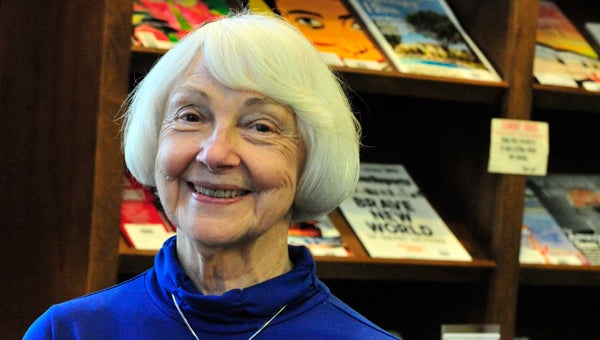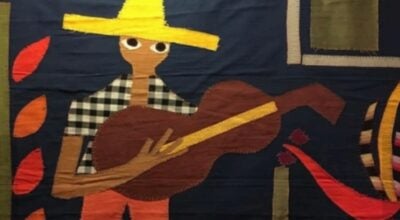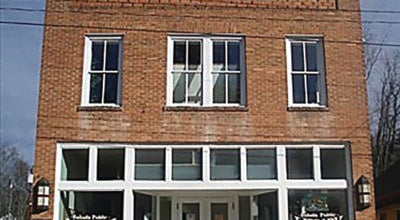Vonda Krahn retires from Lanier Library
Published 9:19 pm Friday, May 29, 2015
In 1993, Vonda Krahn began working at Tryon’s Lanier Library as a circulation clerk. June 1 marks Krahn’s official retirement as executive director of the facility, one of fewer than 20 membership libraries in the country.
Krahn served as executive director since 1997. He successor, Lisa Lyon came on board last week.
Lanier Library, a non profit, now celebrating its 125th anniversary, “is a great place actually,” Krahn remarked. “It’s the oldest civic organization in Polk County.”
Though the U.S. boasts its “Founding Fathers,” Tryon can claim with great pride its “Founding Mothers.” From the dream of five visionary women in 1889, the library has grown to better serve the community, continuing to do so under Krahn.
“Those women were remarkable,” Krahn emphasized. They founded the Lanier Club in 1890. In 1905, the Lanier Library was constructed.
The five women included three sisters, Mary and Lucy LeDuc, and Mrs. Elizabeth Boardman, plus Ameila Spence and Mrs. Thomas Knott. In addition to founding the library, these and other women of the time promoted health education, mandatory school attendance and other civic ideas.
In the library’s early years, traveling bookcases made reading available at churches and businesses for short periods at a time. Early bookcases also made their way to Lynn and Landrum. When settlers came to this area from England, Krahn said, many brought their libraries with them, and shared their books.
Many current civic organizations, including Tryon Fine Arts Center (TFAC) are offshoots of the Lanier Club and the influence of these five women.
Around 1940, Lanier Library had a one-day-per-week branch in Lynn, where poet Sidney Lanier, the library’s namesake, lived for a time.
During World War II, Lanier Library was rented to provide dance space for soldiers.
“It’s absolutely amazing,” Krahn continued. “It hasn’t changed all that much.” The library receives its funds from memberships (a very modest $30 per household annually), donations and endowments.
“People in the area don’t even know this is a library. Anyone can come in and use the library, but only members can take out books.”
Large selections of both fiction and non-fiction volumes can be found, as well as a fine selection of periodicals. Each type of book enjoys its own room. The facility’s Mystery Room, for instance, contains mystery books and films.
Lanier also boasts a North Carolina section, and a large-print book collection.
“We have a wonderful collection of art books,” Kranh noted with pride.
In fact, second only to the selection of books, is the room-to-room display of visual art, donated by community members.
While women originally selected books for the facility, a media selection committee performs that task now. In addition, Krahn noted, members can order books. Library officials encourage members to suggest obtaining books of their choice.
Currently, no e-books are available, but that is likely to change, Krahn said.
Krahn pointed out that Lanier Library is unlike the stereotypical institution where silenced is enforced. Instead, visitors can feel comfortable with normal indoor speech.
Even so, the library is quiet, a treat for those who bring their laptop computers, or use the library’s computers.
“They like it because it’s quiet,” Krahn remarked.
Even with more than 450 memberships, Lanier Library cannot operate on membership fees. Gifts and endowments help keep books available, pay salaries and provide building upkeep. Board members are all volunteers, as are some others performing services at Lanier Library.
Costs have risen for books, Krahn said. For instance, in 1968, a typical hardcover book cost about $7. Today, the cost is about $30. In 1966, the Holmes Room was constructed for $21,000. All additions, to the original 1905 structure, notes Krahn, look to have grown from it.
Memorial funds, presented to the library in someone’s memory, provide items not purchased, or available through, the regular budget.
Because schools now provide programs similar to those at the library, fewer children visit.
“It’s a real treat to see a little kid come in,” Krahn said. “We’d like to do more things for children.”
Overall, “there have been some changes, of course,” Krahn noted, “but the values are still the same.”
“I have been very, very fortunate to work with great board members,” she said. Krahn, who loves to read, said she has been in the right place.
Krahn thanked staff members Lynn Montgomery, Sandra McCall and Claire O’Sheel, “my good friends and loyal ambassadors of the library.”
Lanier Library continues to follow its mission statement, “The continuing promise of Lanier Library is to promote and maintain literary and cultural activities and enhance its unique assets.”
In other words, it will continue to offer the best of old and new.






